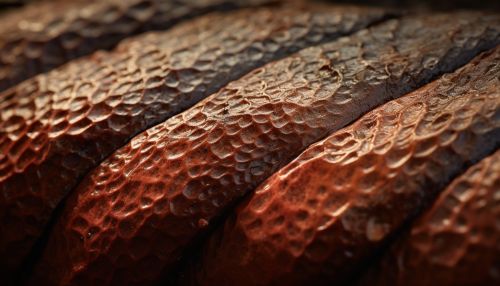Ruminant
Introduction
Ruminants are a type of mammal that digest their food in two steps: first by eating the raw material and regurgitating a semi-digested form known as cud, then eating the cud. This process of digestion is unique to ruminants and allows them to extract more nutrients from plant-based food sources than other types of animals. The ruminant family includes species such as cows, goats, sheep, giraffes, yaks, deer, antelope, and bison.
Anatomy and Physiology
Ruminants are characterized by their complex digestive system, which includes a four-chambered stomach. The four compartments are known as the rumen, reticulum, omasum, and abomasum, each playing a distinct role in the digestion process.
Rumen
The rumen is the largest compartment and serves as the primary site for microbial fermentation of ingested feed. The microbes (bacteria, protozoa, and fungi) present in the rumen help in the breakdown of complex plant materials like cellulose and hemicellulose, which are indigestible by other mammals. The fermentation process produces volatile fatty acids (VFAs) such as acetic, propionic, and butyric acids, which provide the majority of the animal's energy.


Reticulum
The reticulum is the second chamber in the ruminant digestive system. It is smaller than the rumen and has a honeycomb-like inner structure. The reticulum works in conjunction with the rumen to further mix the ingested feed and ensure that the fermentation process is uniform. It also plays a crucial role in the regurgitation of cud for re-chewing.
Omasum
The omasum, also known as the 'manyplies', is the third compartment. It is a spherical organ filled with numerous folds of tissue, which increase the surface area for absorption. The main function of the omasum is to absorb the water and electrolytes from the feed material and control the flow of food particles to the next chamber, the abomasum.
Abomasum
The abomasum is the fourth and final compartment of the ruminant stomach, often referred to as the 'true stomach'. It is similar to the stomach of non-ruminant animals and secretes digestive enzymes and hydrochloric acid to break down the remaining food particles. The digested nutrients are then absorbed into the bloodstream through the walls of the abomasum.
Diet and Nutrition
Ruminants are typically herbivores, feeding on a diet of grasses, shrubs, and other plant material. However, some species, like deer, can also consume small amounts of animal matter. The ability to ferment plant materials in the rumen allows ruminants to utilize nutrients from plants more efficiently than other herbivores. The fermentation process also produces essential nutrients like vitamins B and K, and certain amino acids, which are synthesized by the microbes in the rumen.
Ruminant Species
There are over 200 species of ruminants, including both domestic and wild species. Some of the most well-known ruminants include cattle, sheep, goats, deer, moose, giraffes, and antelopes. Each species has adaptations that allow them to thrive in their specific environments, from the high-altitude dwelling yaks to the desert-adapted oryx.
Impact on Ecosystems
Ruminants play a significant role in ecosystems around the world. They contribute to the cycling of nutrients in the environment and serve as prey for numerous predator species. However, in some areas, overpopulation of wild ruminants or overgrazing by domestic ruminants can lead to environmental degradation.
